National Grid
‘Can You Keep the Lights On?’ eLearning and 24 hour simulation game
The challenge
To enable Control Centre staff to understand and practise applying new load balancing technology virtually, long before the equipment has been installed.
National Grid plans to install ‘series compensation’ capacitor banks on the interconnection between England and Scotland, and in North Wales, to enable power flows to be maximised whilst still maintaining system stability. Control centre staff needed to be exposed to a variety of demand and supply scenarios – the objective being a smooth operational transition from old systems to new.
National Grid also wanted to be able to create an unlimited number of its own scenarios in-house, without the need for any programming. The appearance of the simulator should be variable, presenting both games-style and more serious corporate interfaces.
Our solution
An interactive training simulation system which places learners in a variety of scenarios allowing them to apply new load balancing technology virtually. The program has three components:
- Theory of Series Compensation
- Free 24 hour Simulation
- Assessed 24 hour Simulation
The program starts with a 15 minute, narrated eLearning module on the theory behind ‘Series Compensation’, the use of huge banks of capacitors to smooth the tensions created by the variations in electricity flow between regions.
Animations illustrate how the new equipment brings stability to the system.
In the main section of the program, a load-balancing network simulator, users work through a 24 hour cycle.
Every 3 hours they must assess the current consumer demand on the network and adjust the amount of compensation being applied, using seven separate adjusters (‘throttles’) and the power output received from wind, hydro and fossil fuel power stations. Power flows in each section of the network are displayed on meters, together with the network frequency.
The aim is to keep the loads balanced within operating limits, without overloading any of the transmission lines and maintaining the network frequency as near to 50Hz as possible. The network frequency and current flows at each switching point are constantly displayed to provide feedback on the effect of the user’s decisions.
At each 3 hour decision point, the simulator displays a running graph showing actual power demand versus the power delivered, as well
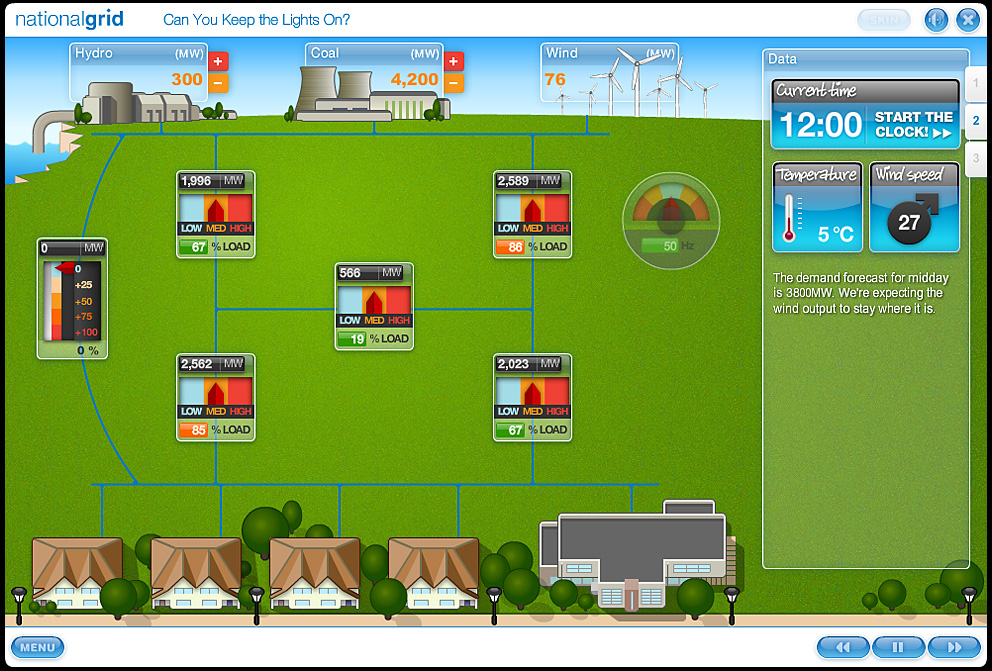
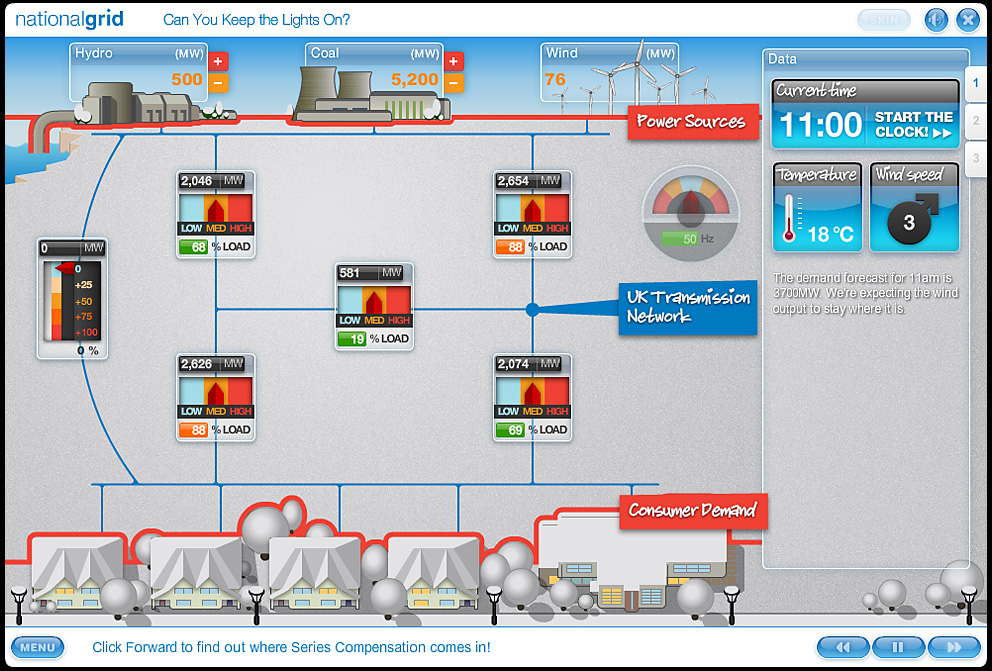
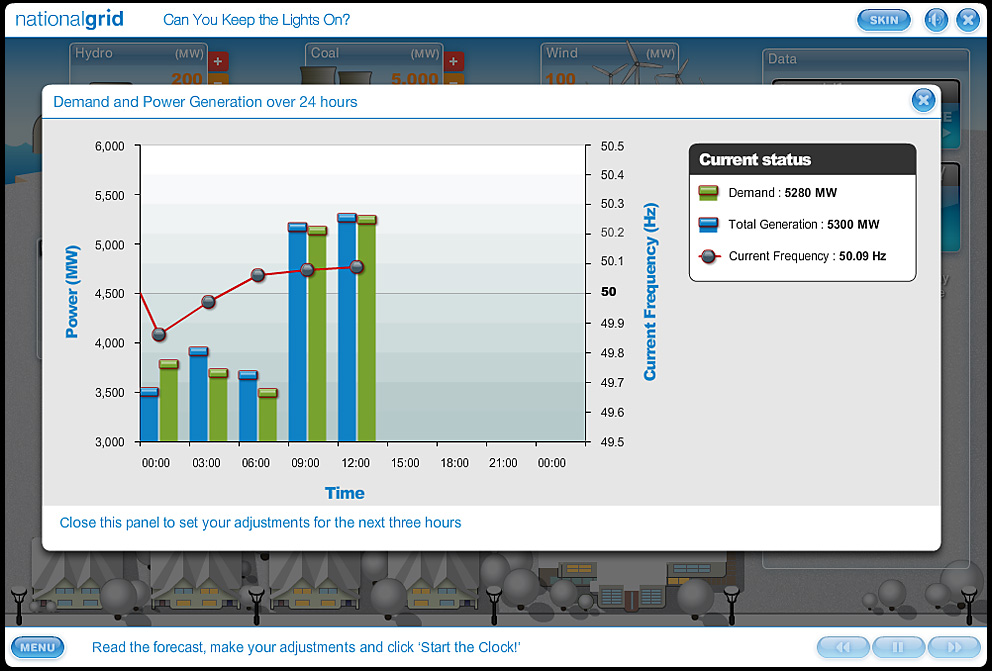
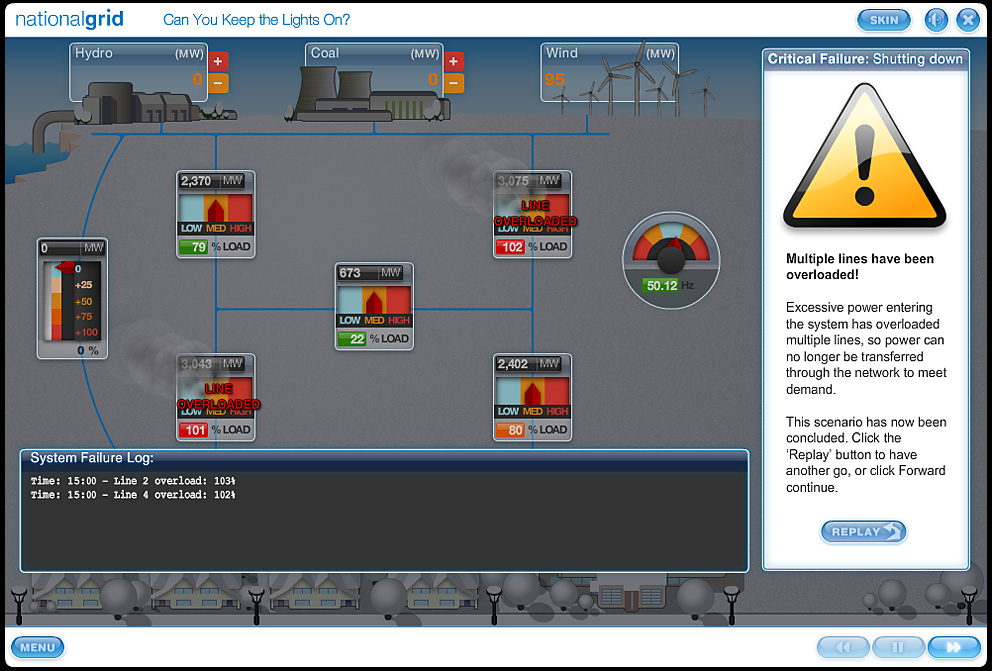
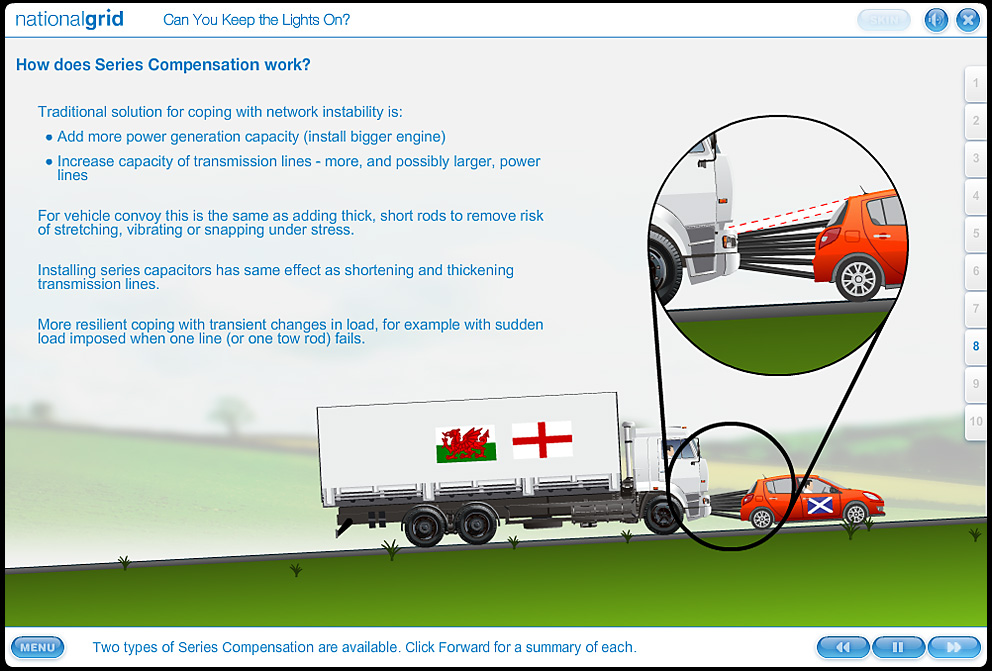
Who is it for?
System requirements
as the network frequency. Inappropriate actions (or lack of actions) can lead to a severe overload or imbalance, possibly damaging equipment and bringing the scenario to a premature end.
As each scenario unfolds, and day turns to night, the simulator graphics darken and electricity demand falls as the lights in homes and offices are switched off.
Client configurable
A powerful feature of the simulator is its configurability. All of the scenario data, such as consumer demand and climate conditions over each three hour time slot, is held externally in .xml files, allowing National Grid to easily create any number of new scenarios without programming, using a simple administrative tool developed by TNA.
